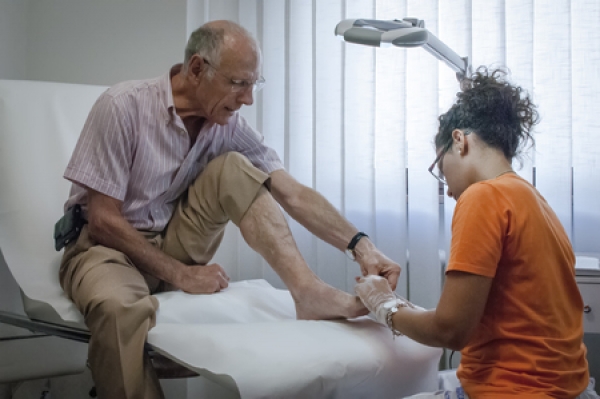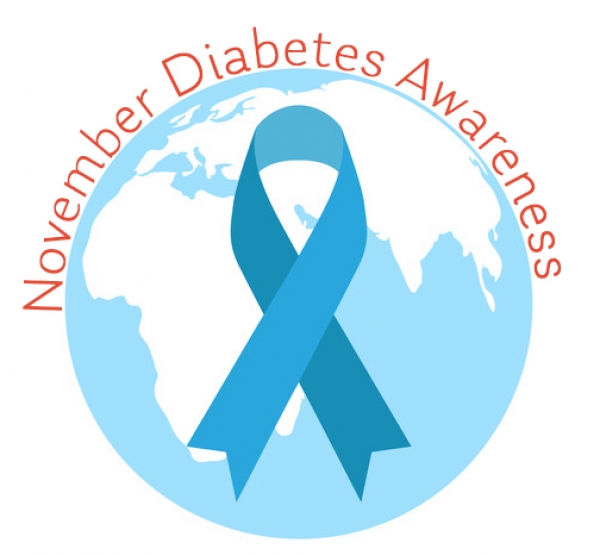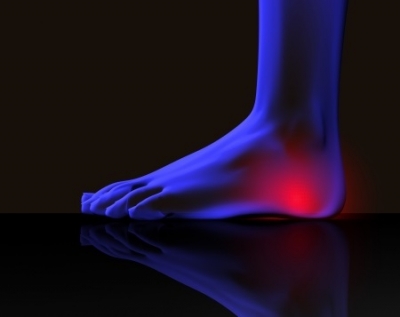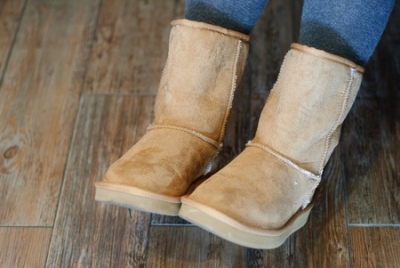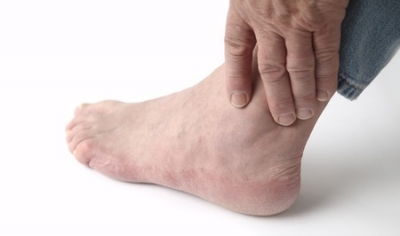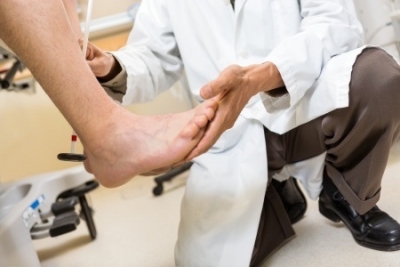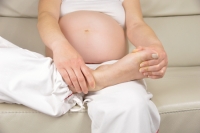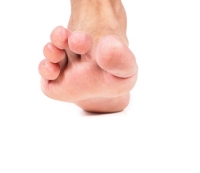Connect With Us
Blogs
Blog
Children categories
At Superior Foot & Ankle Care Center, when patients visit our Los Angeles county/Douglas Park area office, we want to be sure they leave with a good understanding of their podiatric condition and what needs to happen for pain relief and healing. Our excellent staff will do all they can to ensure that your treatment with our podiatrists, Dr. Victoria M. Foley or Dr. Constance Ornelas will be efficient and effective. As a patient, there are several things you can do before, during, and after your appointment at our Long Beach office that will also help tremendously. Below is a checklist to help you make the most of your appointment.
Before You Come In:
- Get any necessary referrals for your appointment. If you’re not sure if you need one, contact your insurance company to find out.
- Write down any questions you have about your foot health or the symptoms you are experiencing.
- Make a list of all medications—prescription and over the counter—and supplements that you are currently taking to give to the podiatrist.
- Alert our office ahead of time if you have any special needs.
- Enlist a trusted family member or friend to accompany you on your appointment if you need a second set of ears.
At the Podiatrist’s Office:
- Let the podiatrist know if you have any new symptoms or have noticed the worsening of an existing condition.
- Be sure you are clear about what the foot doctor tells you about your diagnosis. If you don’t understand something, ask them to explain it again.
- If the podiatrist prescribes medication for you, make sure you understand the proper way to take it. Ask about side effects and let the foot doctor know if you have any allergies, are pregnant, or plan to get pregnant.
- Check that all the questions on the list you’ve brought with you have been answered.
After Your Appointment:
- On your way out, schedule a follow-up appointment if needed.
- If tests have been done or ordered, ask how long it will be before you can expect the results.
Contact us at (562) 420-9800 if you realize you have additional questions once you get home, or if your symptoms change or get worse.
November is American Diabetes Month, and at Superior Foot & Ankle Care Center we offer specialized podiatric care to our patients who have this disease. One very important aspect of diabetic foot care is choosing the right shoes to protect feet and prevent injury. Since diabetes affects bones, joints, and skin, there are several different aspects of footwear to consider. Our podiatrists, Dr. Victoria M. Foley or Dr. Constance Ornelas will advise you as to the best type of shoes for your unique feet. In some cases, special shoes designed specifically for diabetics may be recommended, or the foot doctor may fit you for a custom orthotic device to help control motion and pressure in your feet.
Below are some points to consider when shopping for shoes if you have diabetes:
Limiting Movement—shoes that limit movement can help alleviate joint inflammation and pain. Limited horizontal movement of the foot inside the shoe can prevent friction which leads to skin irritation, ulcers, wounds, infections, and deformities.
Absorbing Shock—diabetic patients benefit from shoes that reduce impact by absorbing shock. This lessens pressure to the bottom of the foot, preventing wear and tear that can lead to complications. Look for shoes that have a thick sole. A deep heel cup and well-cushioned insole will also help protect your feet and increase comfort.
Let Feet Breathe—in order to avoid fungal infections, it’s necessary to keep feet dry. Choose shoes made of natural, breathable materials. Avoid shoes made of plastic or vinyl. Alternate shoes to allow each pair a chance to air out and dry.
Proper Fit—shoes that fit well are important for all patients, but even more so for those with diabetes. Have your foot professionally measured. Let the salesperson know that you have diabetes. If our podiatrists have prescribed an orthotic device, bring it with you when shopping for shoes and make sure the pair you pick can accommodate the orthotic. Try on both shoes and take your time walking around to make sure they fit. Finally, run your hand around the inside of the shoes to check for rough spots or loose stitching that could rub against your feet.
Choosing shoes carefully will go a long way toward preventing diabetic complications. If you have questions or concerns about diabetes and your feet, don’t hesitate to schedule an appointment our Long Beach office by calling: (562) 420-9800
One of the most frequent reasons that patients come to see us at Superior Foot & Ankle Care Center is heel pain. There are multiple causes of heel pain, however, and for that reason it’s important that if your heel is hurting, you have one of our podiatrists, Dr. Victoria M. Foley or Dr. Constance Ornelas examine your feet and determine the source of your discomfort. Once the foot doctor has diagnosed the condition that is causing your pain, the proper treatment plan can be decided upon.
Below are three common reasons heels hurt:
- Plantar Fasciitis—along the bottom of your foot there is a long band of tissue known as the plantar fascia that connects the heel bone to the ball of the foot. The plantar fascia is subject to large amounts of pressure and impact from normal daily activities. If you are a runner or serious athlete, your plantar fascia is getting an additional workout. When the plantar fascia becomes inflamed, it can cause heel pain. One telltale sign that plantar fasciitis is the cause of your heel discomfort is pain that is worse first thing in the morning. You may also experience pain in the arch of your foot and swelling on the bottom of your heel.
- Heel Spurs—spurs are outgrowths of bone. Heel spurs are often associated with, but are different from plantar fasciitis. When calcium deposits form in the heel, bone spurs can develop. Pressure from footwear and walking can cause redness, swelling, and painful inflammation. If you have heel spurs you may experience sharp pain or a dull ache.
- Flat Feet—although flat feet can also have several causes, the bottom line is that if your arch is collapsing, heel pain can result from it. Flattening of the arch puts your foot in a biomechanically abnormal position, which exerts excess pressure on the heel. This is why shoes that lack arch support can also be a heel pain trigger.
Depending on the source of your heel pain, there are many conservative treatments including: losing weight, custom orthotic and stretching exercises. Make an appointment at our Long Beach office in Douglas Park CA to find out why your heel is hurting.
At Superior Foot & Ankle Care Center, we know that fashion boots are popular among our patients. Although this type of footwear can be a stylish accessory to your fall clothes, they need to be designed with the health of your foot in mind and also fit properly, just like any shoes you buy. Below are some tips to remember when purchasing new boots or evaluating the ones currently in your closet.
- Take foot disorders into consideration. If you have a chronic podiatric problem such as weak ankles or plantar fasciitis, you’ll need to choose boots that will accommodate your condition. If you haven’t been to our Long Beach office recently, it may be a good idea to make an appointment with our podiatrists, Victoria M. Foley or Dr. Constance Ornelas to have your condition checked. The foot doctor monitors the progression of any chronic foot condition and can also make recommendations for footwear styles that will be best for your individual feet.
- Choose styles with roomy toe boxes. Pointy boots, just like pointy shoes, cram your toes together exacerbating and speeding the progression of toe deformities like hammertoe. Toes that spend too much time pushed up against one another are also more likely to develop ingrown toenails.
- Exercise heel smarts. The heel on your boot will impact stability and comfort. Don’t exceed two inches in heel height. Wide heels will help you avoid slips and ankle twisting injuries. The heel cup should fit snugly and ideally will have some cushioning to help absorb shock.
- Get support. Many patients wonder why their heels hurt at the end of boot season. It’s because many fashion boots contain little or no arch support. When your arch goes flat, it puts excess strain on the ligament on the bottom of your foot and can cause plantar fasciitis which leads to heel pain.
- Have your foot professionally measured. If one foot is larger than the other, buy to accommodate the bigger foot. Always try on both boots and walk around for several minutes to determine if they fit comfortably. Shopping at the end of the day when your feet are the most swollen is likely to result in boots that will be comfortable all day.
If you have specific questions about your feet Superior Foot & Ankle Care can help with any foot conditions you may have in the Long Beach office in Douglas Park CA, contact us.
At Superior Foot & Ankle Care Center, we know that swelling of the feet and ankles is a fairly common occurrence. It can simply be the result of a long day spent sitting or standing without enough breaks to move around. Sometimes, however, swelling (also known as edema) can be the result of another issue going on in your body. For this reason, it’s important not to ignore swelling that lasts for more than a day or is an ongoing symptom. Contact our Long Beach office by calling: (562) 420-9800 to make an appointment with one of our podiatrists, Dr. Victoria M. Foley or Dr. Constance Ornelas to have your feet and ankles examined and find the source of the swelling.
Below are some common causes of edema:
Pregnancy—the fluids in your body greatly increase when you are pregnant. That fact, combined with the extra weight, it is normal to gain during pregnancy increase the likelihood of extra fluid pooling in the feet and ankles. Putting your feet up regularly is one of the best ways to prevent edema from causing discomfort.
Arthritis—when your joints become inflamed, it is not unusual for swelling to occur. You may notice pain and stiffness in the joints as well if arthritis is behind your edema.
Vein Problems—venous insufficiency can occur over time and is more common in patients over the age of 50. As the valves in veins get stretched out, they can begin to leak when the blood flows back to your heart. Thanks to gravity, the leaked blood will pool in the lower extremities. Another more serious vein issue that can have swelling as a symptom is a blood clot. If the swelling seems to be moving up your leg or the area is warm, you experience shortness of breath, or feel lightheaded, you should seek medical attention immediately.
Medical Conditions and Medications—edema can be a sign of an infection in a joint in your leg, ankle, or foot. It can also be a sign of lymphedema (a blockage in the lymphatic system that causes fluid to pool in the lower extremities), a heart, liver, or kidney problem. Anti-inflammatory medications (both prescription and over the counter), certain antidepressants, blood pressure medications, and hormones can all have edema as a side-effect.
Don’t delay in getting even mundane foot and ankle symptoms checked promptly. Contact us if you have any questions regarding the condition of your feet in Long Beach Douglas Park CA.
At Superior Foot & Ankle Care Center, we strive to make your podiatric visits as non-scary as possible. Certain foot problems, however, have names that sound quite frightening, but in reality, are fairly common and easily treated. Below are three that might cause you to be alarmed:
Subungual hematomas—not only does this condition sound gruesome, its appearance may give you a scare as well. Its telltale sign is a black toenail. No plague here, however. The black color of the nail is caused by blood pooling under the nail—most often the result of an injury to the toe, like a bad stubbing or a heavy object falling on your foot. Black toenails are also a frequent occurrence among patients who are runners. The repetitive pounding of the toes up against the front of the shoe can result in black nails. In most cases, subungual hematomas will clear up on their own. You might want to get your feet measured to make sure you are wearing shoes that are big enough for your feet.
Onychomycosis—this ten-dollar term is another way of saying you have toenail fungus. Although you may feel that your toe looks like it belongs in a horror movie—discolored, edges that are crumbling and breaking off and odd spots on the nail—fungal nails are often not painful at all. In fact, that’s partly why patients don’t bother getting them evaluated. Fungal infections can spread to other toes and other parts of the body, however, so it’s best to have our podiatrists, Dr. Victoria M. Foley or Dr. Constance Ornelas evaluate a funky looking nail and prescribe the best treatment.
Tenia pedis—you probably know this condition better by its more common name, athlete’s foot. This common foot fungus can be unbearably itchy and cause a red rash, flaky skin and even oozing blisters if left untreated. You get athlete’s foot by coming in direct contact with the fungi and most cases can be prevented by keeping your feet covered in public places and not sharing socks, shoes, or other items that touch another person’s feet.
No matter how bizarre your podiatric symptoms may be, the best course of action is to contact our Long Beach office for an appointment as soon as possible by calling: (562) 420-9800.
If you follow football you may have heard that Caroline Panthers quarterback, Cam Newton, was put on the disabled list for a Lisfranc injury. While less common than other sports injuries, we at Superior Foot & Ankle Care Center think it’s important to make information about this problem available, especially in the fall since football players are in a high-risk category.
FACT: The Lisfranc joint is located where the long bones of your toes (metatarsals) connect with the bones of the arch of your foot (tarsals). A ligament or tough band of tissue that joins two of these bones is called the Lisfranc ligament.
FACT: Lisfranc injuries can occur in different ways, some of which may occur simultaneously. These include:
- Sprain—overstretching of the Lisfranc or other ligaments in the middle part of the foot
- Fracture—this can be either a full break of a bone in the Lisfranc joint or an avulsion fracture which occurs when a small piece of bone is pulled off
- Dislocation—the bones in the Lisfranc joint are forced out of their normal position
FACT: These types of injuries can happen as the result of trauma, such as a car accident or a heavy object falling on the midfoot, playing football or another contact sport, running or horseback riding. Sometimes, however, it can be caused by something as simple as missing a step on the stairs.
FACT: Signs that you may have injured your Lisfranc joint or ligament include:
- Pain in the midfoot when pressure is applied, like standing
- Swelling
- Bruising or blistering on the arch or top of the foot
- Widening of the foot
- Difficulty bearing weight on the injured foot
FACT: If you notice these types of symptoms, don’t take a “wait and see” approach. Contact our Long Beach office in Douglas Park CA immediately by calling, (562) 420-9800. Our podiatrists, Dr. Victoria M. Foley or Dr. Constance Ornelas will want to examine your foot and will also order x-rays or other imaging studies to determine if the Lisfranc has been injured. In some cases, emergency surgery may be necessary. Otherwise, conservative treatments such as immobilizing the foot with a cast, oral medications and physical therapy can be prescribed.
Are you pregnant? Congratulations! At Superior Foot & Ankle Care Center, we know how excited you must be. We also want to do our part to help ensure that your pregnancy proceeds as comfortably as possible. Hormonal changes and weight gain that occur naturally during pregnancy can play havoc on the health of your feet. Below are some common problems pregnant women encounter and what to do about them.
Arch and Heel Pain—these are perhaps the most common complaints pregnant women have about their feet. As your pregnancy progresses, the added weight can have the effect of flattening your arch, resulting in symptoms similar to those of patients with flat feet. Pain in the arch and heel pain due to the strain put on the plantar fascia (the long band of tissue that runs along the bottom of your foot) are not uncommon. To combat this type of discomfort, look for shoes with extra arch support. In some cases, our podiatrists, Dr. Victoria M. Foley or Dr. Constance Ornelas will fit you with a custom orthotic device to wear in your shoes.
Ingrown toenails—hormones released by your body toward the end of your pregnancy to help relax ligaments to make birth easier can affect your feet by causing them to spread. Your shoes may start to feel too tight. When toes are pressed up against each other for long periods of time, ingrown toenails can develop. It may be necessary to buy shoes that are a larger size or wider width for the last trimester.
Swelling—excess fluid in your body, and the position of the baby may result in swollen feet and ankles. This can lead to discomfort and pain. The best way to reduce swelling is by putting your feet up frequently. Stretching, not crossing your legs when sitting and drinking lots of water will help too.
If your feet are giving you trouble during your pregnancy, make an appointment at our Long Beach office in Douglas Park CA by calling: (562) 420-9800. Our podiatrists will help get to the source of your discomfort and prescribe a safe and effective treatment.
At Superior Foot & Ankle Care Center, we often find that more women are making appointments at our Long Beach office in Douglas Park, CA the fall with complaints about their bunions and hammertoes. These are both deformities of the toes that can seem more painful than ever when patients switch from the open shoe styles of summer to closed toe shoes in the fall.
A bunion occurs when the big toe joint begins to move out of place and the big toe drifts toward the second toe. As the dislocation of the joint progresses, the telltale bump forms on the side of the toe. In the case of hammertoe, the second, third, or fourth toe begins to bend at the middle joint creating the hammer-like position of the toe and hence the name. Although these two conditions are different in appearance, they are both toe deformities and have several things in common.
The Shoe Factor
Bunions and hammertoes are both biomechanical problems that can be caused by an inherited tendency for the deformity, or a number of other risk factors, such as arthritis or a previous injury. Both conditions, however, can be made worse by wearing shoes that are too tight and narrow in the toe box. High-heeled shoes and boots can also exacerbate these conditions because they force feet forward and exert extra pressure on the toes.
What to Do
If you are experiencing increased discomfort from either a hammertoe or a bunion, make an appointment with our podiatrists, Dr. Victoria M. Foley or Dr. Constance Ornelas, so they can evaluate your toes and see how far the condition has progressed. The foot doctor will determine if surgery is needed to correct the problem or if you can get by at this point with conservative measures. These may include:
- Icing the toe
- Anti-inflammatory medications
- Shoe modifications or a custom orthotic
- Stretching exercises or physical therapy
Don’t wait. If you are in pain, contact us today and let us help you get relief.
Hiking is a great way to stay in shape, spend time with family and friends, and appreciate the beauty of nature. At Superior Foot & Ankle Care Center, we want our patients to keep their feet safe while enjoying this activity. Below are some recommendations before you hit the trail.
Shoe Sense—it all starts with the right hiking shoes or boots. The terrain on trails can be steep, uneven, and unstable. It’s essential that you have the proper foot gear. Get professionally fitted and buy quality-hiking shoes that protect your feet from moisture, provide good support and shock absorption, and have a tread to help prevent slips and slides. If you have chronic foot problem such as weak ankles or heel spurs, see our podiatrists, Dr. Victoria M. Foley or Dr. Constance Ornelas get recommendations for shoe styles and other modifications that will best accommodate your condition.
Proper Planning—if you are planning to hike on a trail you’ve never been on, study a map to determine the length of the trail, whether it’s “in and out” or a circle, the elevation, and how the trail is maintained. Take into consideration your current physical condition and don’t overdo it. Warm-up and stretch before starting a hike to avoid injuries like Achilles tendonitis.
Knapsack Know-How—in addition to granola bars and plenty of water (which will not only keep you hydrated but also reduce the chances of painful swelling in your feet and ankles), you should include a few other items in your backpack. Blisters, though small, can ruin a hike. Pack moleskin and use it as soon as you notice rubbing or a sore spot on your foot. It’s also a good idea to have wraps or elastic bandages in case of an ankle sprain and bandages and antibiotic ointment for minor scrapes or insect bites.
Foot and ankle injuries require immediate medical attention. If you fall, twist an ankle, or injure your feet or ankles in any way while hiking, contact our Long Beach office in Douglas Park, CA by calling (562) 420-9800 as soon as possible. Until you can get in to see us, follow the RICE regimen: Rest, Ice, Compression, and Elevation.
More...
At Superior Foot & Ankle Care Center, we treat patients of all ages. During the month of September, we celebrate Fall Prevention Awareness Day , and it’s a good opportunity for us to address this serious concern for our senior patients.
Facts about Falls
Some sobering statistics about falls:
- Every 11 seconds an older adult is seen in the emergency room for a fall injury
- Falls are the number one cause of fatal injuries and trauma-related hospital admissions for senior citizens
- Each year, one fourth of all Americans aged 65 and older will fall
- Falls can lead to a decrease in quality of life for older adults causing fear, depression, physical decline and social isolation
There is much that can be done to prevent senior falls. The first step is debunking common myths and changing the mindset of at-risk patients. Some of the more common fallacies about falls include:
“Falling is just a normal part of getting old.” Not so. For every senior who falls there are three that don’t. Staying active, wearing shoes that fit properly, getting your vision and other medical issues checked regularly and managing medications properly are just a few ways to reduce fall risk.
“If my feet hurt, I just need to be extra careful when I walk.” Foot pain is primary cause of fall injuries. When you are in pain, you naturally alter the way you walk to protect the vulnerable area. This, in turn, can throw off your balance and cause you to stumble. Get foot pain checked out promptly by our podiatrists, Dr. Victoria M. Foley or Dr. Constance Ornelas. The foot doctor can diagnose your podiatric problem and prescribe the necessary treatment to bring relief from pain.
“Using a cane or walker will really make me look old and lead to loss of independence.” If the foot doctor or physical therapist prescribes a walking aid, it will actually help you preserve your independence by enabling you to walk safely. Follow instructions for use and be sure the cane or walker is fitted for you.
“If I stay home, I’ll be safe.” The truth is that over half of all falls happen at home. Reduce the chances of taking a spill by getting rid of clutter on the floor and throw rugs. Add grab bars in the bathroom and a second handrail on stairs. Increase lighting in hallways and by the entrances to your home.
Don’t be embarrassed to share concerns about falling with the podiatrist at your next appointment. If you have questions, contact our Long Beach office in Douglas Park, CA by calling: (562) 420-9800.
At Superior Foot & Ankle Care Center, we find that patients may not accurately understand the seriousness of decreased circulation to the lower extremities. The medical condition known as peripheral arterial disease (PAD) describes a situation where plaque (fatty deposits or cholesterol) have adhered to the walls of the arteries that lead to your legs and feet causing a partial or total blockage. This restricts the blood flow to the lower half of your body. PAD is often associated with diabetes and a significant cause of some of the more serious complications of the disease. When oxygen and nutrient-rich blood cannot get to your legs and feet in significant quantities, it makes it difficult to heal wounds and ulcers. This can lead to infection and, in extreme cases, amputation.
Recognize the Symptoms
There is a variety of symptoms of PAD that you may observe or experience. These include:
- Pain or cramping in your feet, legs, thighs or buttocks
- Feeling of coldness in your legs
- Hair loss on your toes and legs
- Bluish or reddish tinge to the skin on your feet or under the toenails
- Thickening and discoloration of your toenails
- Ulcers or wounds on your feet that have not healed after 8-12 weeks
If you notice any of these signs, you should contact our Long Beach office for an appointment by calling: (562) 420-9800. Our podiatrists, Dr. Victoria M. Foley or Dr. Constance Ornelas will want to examine your feet. There are a number of simple, non-invasive tests the foot doctor can perform to see if your symptoms point to PAD.
Reducing Your Risk
In addition to diabetes, PAD is also more common in patients who have high blood pressure, high cholesterol, heart disease or who have suffered a stroke. You are also at a higher risk for developing PAD if you are over the age of 50 or have a family history of PAD, heart disease or stroke. The good news, however, is that some risk factors for PAD are within your control to control. These include:
- Smoking
- Sedentary lifestyle
- Obesity
Making healthy lifestyle choices now and partnering with your podiatrist to monitor your foot health can help you prevent PAD or slow its progression. If you have additional questions about PAD, contact us at our Long Beach office in Douglas Park CA.
At Superior Foot & Ankle Care Center, we find that patients may not accurately understand the seriousness of decreased circulation to the lower extremities. The medical condition known as peripheral arterial disease (PAD) describes a situation where plaque (fatty deposits or cholesterol) have adhered to the walls of the arteries that lead to your legs and feet causing a partial or total blockage. This restricts the blood flow to the lower half of your body. PAD is often associated with diabetes and a significant cause of some of the more serious complications of the disease. When oxygen and nutrient-rich blood cannot get to your legs and feet in significant quantities, it makes it difficult to heal wounds and ulcers. This can lead to infection and, in extreme cases, amputation.
Recognize the Symptoms
There is a variety of symptoms of PAD that you may observe or experience. These include:
- Pain or cramping in your feet, legs, thighs or buttocks
- Feeling of coldness in your legs
- Hair loss on your toes and legs
- Bluish or reddish tinge to the skin on your feet or under the toenails
- Thickening and discoloration of your toenails
- Ulcers or wounds on your feet that have not healed after 8-12 weeks
If you notice any of these signs, you should contact our Long Beach office for an appointment by calling: (562) 420-9800. Our podiatrists, Dr. Victoria M. Foley or Dr. Constance Ornelas will want to examine your feet. There are a number of simple, non-invasive tests the foot doctor can perform to see if your symptoms point to PAD.
Reducing Your Risk
In addition to diabetes, PAD is also more common in patients who have high blood pressure, high cholesterol, heart disease or who have suffered a stroke. You are also at a higher risk for developing PAD if you are over the age of 50 or have a family history of PAD, heart disease or stroke. The good news, however, is that some risk factors for PAD are within your control to control. These include:
- Smoking
- Sedentary lifestyle
- Obesity
Making healthy lifestyle choices now and partnering with your podiatrist to monitor your foot health can help you prevent PAD or slow its progression. If you have additional questions about PAD, contact us at our Long Beach office in Douglas Park CA.
At Superior Foot & Ankle Care Center, we know that families all over Long Beach, Douglas Park area in California are preparing for that annual back-to-school shoe shopping trip. Of course, we think that the most important item on your list is new shoes. The choices you make for your children’s footwear can increase overall foot health and decrease the risk of injuries and podiatric disorders. Take our true/false quiz below to see how you score on shoe-shopping knowledge.
If I know my child’s shoe size, it’s best to reduce the hassle and order them online.
False—shoe size can vary among different brands and styles. You shouldn’t buy any shoes for your child without having them try them on. You also shouldn’t assume you know your child’s foot size. Children’s feet can increase a half size in as little as four months. It’s best to take your child to a shoe store, have their feet professionally measured, and then have them try on the shoes you are considering buying.
It’s best to shop first thing in the morning while my child is fresh and not cranky.
False—although your child may be in a better mood early in the day, that’s also when feet are at their smallest. Shoes bought then may feel tight later in the day and result in blisters or foot pain. Shop late in the afternoon or after dinner to ensure that shoes will feel comfortable all day long.
There should be some room in a shoe between the big toe and the front of the shoe.
True—about a thumb’s width (half an inch) of space will ensure that your child can move their toes and forefoot comfortably in the shoes. Tight toe boxes can lead to ingrown toenails and foot pain. You should also choose shoes that have firm heel counters, arch support, and a cushioned foot bed.
The podiatrist can offer recommendations regarding shoe styles for my child.
True—our podiatrists, Dr. Victoria M. Foley or Dr. Constance Ornelas will be happy to examine your child’s feet and make suggestions about proper footwear. It’s particularly important that you make an appointment at our Long Beach office if your child has sustained a foot or ankle injury recently or has a chronic foot condition such as flat feet or weak ankles. Contact us by calling: (562) 420-9800.

